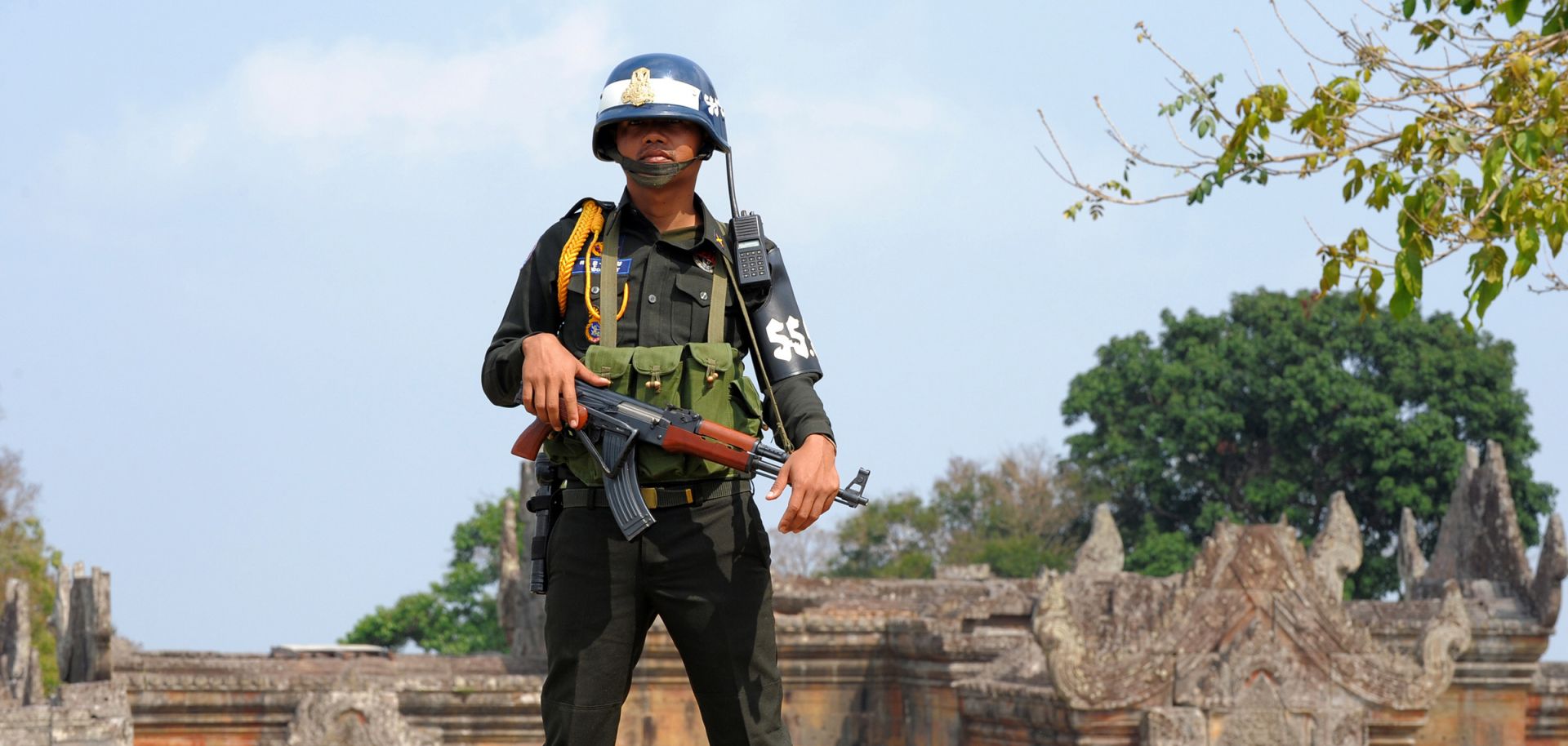
Thailand and Cambodia reached a cease-fire April 28 after exchanging rocket- and gunfire since April 22. Cambodian Maj. Gen. Chea Mon of the 4th Military Region met with Thai Lt.Gen. Thawatchai Samutsakorn of the 2nd Army Region. Fighting this month has killed 13 of the countries' soldiers and sent more than 50,000 refugees fleeing villages in Cambodia's Oddar Meanchey province and Thailand's Surin province.
The fighting has centered on two temples on the disputed border territory, known as Ta Moan and Ta Krabei. This is a separate location from the more usual combat site in the area surrounding the more famous disputed Preah Vihear temple about 150 kilometers (90 miles) to the east, which saw a similar eruption of combat Feb. 4-7 and a brief encounter on April 26. Thailand and Cambodia are ancient enemies, and their undemarcated border has long been the site of military engagement, with both seeking to maintain a foothold on the Khorat Plateau — and block each other from doing so. The temples are symbolic and also have the potential for bringing tourism and economic benefits, so the two sides often fight over access to them. However, the recent outbreaks of fighting — as with the outbreaks in 2008 — come at a time of political transition in Thailand. Military leaders on both sides have an interest in continuing conflict — Thailand because the army may seek to influence upcoming elections by generating nationalism and Cambodia because it stands to benefit if it can bring international involvement into the border conflict to weaken Thailand's ability to act unilaterally.
A cease-fire does not mean a conclusion to sporadic fighting, which has roots that go back hundreds of years before Thailand's post-WWII rejection of French colonial-era border maps and international court decisions. Thailand's internal situation is particularly in flux, and Cambodia is embroiled in Thailand's factional disputes, so the border will likely continue to be unusually volatile for the near future.



